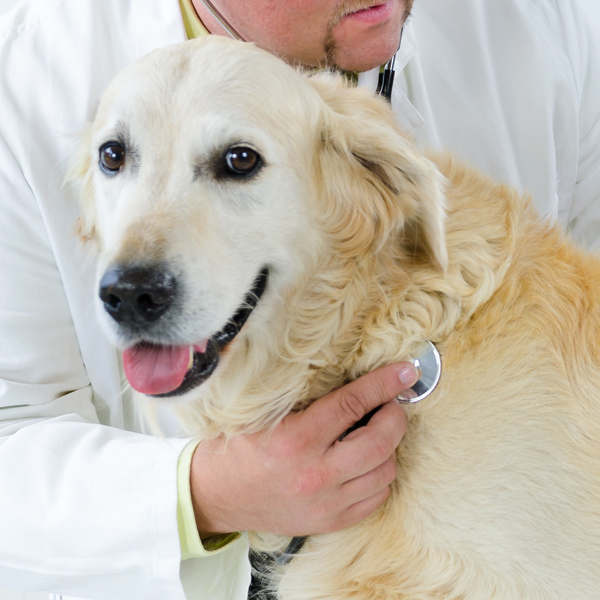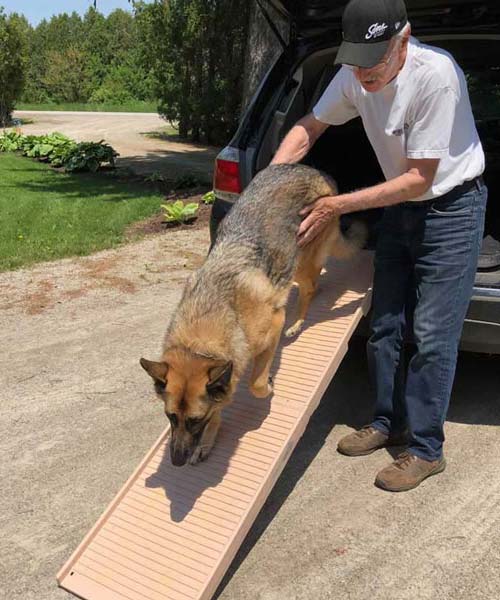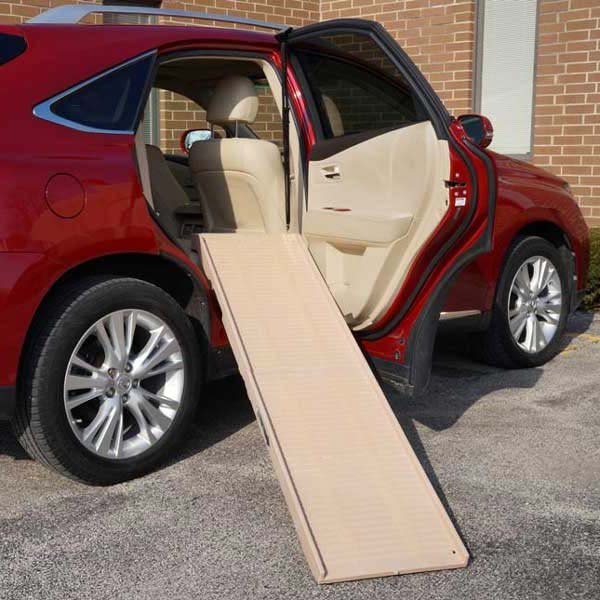-
- SHOP
- Pool Ramp for Dogs
- For People
- For Pets
- Gallery
- Blog
- Our Company
- Cart
- Login
- Newsletter
- Free US Shipping on orders over $79!
All dog owners know that their pets are just as much a part of the family as the humans are. People love to bring their furry friends all over the place, too– whether it be to the beach, the park, or even the dreaded vet.
Owners of large dogs know that over time, their once-rambunctious friend begins to lose its ability to move and jump like it could when it was a young pup. Health problems can be very common for large dog breeds, especially as they age. This means that getting them into the car can become both cumbersome and dangerous for everyone involved. Dogs such as Golden Retrievers, German Shepherds, Labradors, Rottweilers, and others might not be able to make that jump without putting undue strain on their legs and hips, and owners might have trouble lifting them to assist. Pet ramps are a great tool to make getting into and out of a car easier, safer, and healthier process.

Even before large dogs get old, excessive jumping can bring on different health issues for big dog breeds, including pain in the joints and hips.

A common health condition that can affect large dog breeds is arthritis. As dogs age, the cartilage in their joints deteriorates, causing discomfort when they move. This is an even bigger issue for large breeds because of their size and weight adding pressure on their joints. Using a ramp eliminates the need for your dog to jump, an action whose explosive nature can exacerbate joint conditions.
Indeed, for larger dogs, working to reduce stress on their joints should start at a younger age than mid-to-small-sized dogs. Getting a ramp before your dog begins to show obvious signs of arthritis can slow the progression of the disease.
Hip Dysplasia is a hereditary disease that is especially common with larger dogs like German Shepherds, Labradors, Great Danes, Saint Bernards and others, according to the American Kennel Club. Hip dysplasia is a condition where the two parts of the hip joint– the head of the femur and the socket in the pelvis it fits into– don’t grow at equal rates, causing looseness in the joint. A dog with hip dysplasia will avoid doing things like jumping and climbing stairs.
The condition comes on as a result of the dog’s weight. If dogs become too heavy as they’re growing, hip dysplasia can occur. Weight being the biggest factor is why large breed dogs are most at risk for the condition. Along with pet ramps, making sure your dog lives a healthy lifestyle with a good diet can help reduce the ill effects of the disease.
Hip dysplasia can exhibit symptoms within the first couple of years of a dog’s life, so this isn’t something that only affects older dogs. This is one reason why a large dog owner should consider getting a pet ramp early on in their dog’s life to help prevent bigger health problems down the road.
Elbow dysplasia is a condition similar to hip dysplasia, but it affects the front limbs instead. It has the same general issue, with the bones making up the elbow joint growing at different rates on not fitting together. Pet ramps help with both joints just the same.

Besides these health conditions, a ramp can also help prevent other injuries from arising, including sprained wrists and hips or injured foot pads.
Your dog isn’t the only one with health concerns. If your pooch can’t jump into the car by itself, it’s on you, the owner, to get them up there. This involves lifting, and large breed dogs are given that classification for a reason. Golden Retrievers on average can weigh up to 75 pounds. For German Shepherds, it can be up to 88 pounds. Lifting something that heavy is a struggle for most people, and a dog that’s squirming or scared can be even more of a challenge.
You’re having to frequently, or even infrequently, lift your dog could be a risk to your health, especially if you’ve already got health problems or are of an age when you need to be careful.
Aside from pet ramps, folding pet stairs are also sold to help get your dog into your truck, SUV or car. Dog steps, however, don’t provide the same kind of help a ramp can for large breed dogs. Stairs can still challenge large dogs with arthritis or hip/elbow dysplasia because it forces them to put more stress on their joints. Dogs with those conditions will typically try and avoid stairs in your house because it causes them pain. Pet ramps have a more gradual incline that’s much easier on the dog’s joints.

Getting a properly sized, high quality ramp is just as important as the decision to get one. The first thing to consider is the length of the ramp needed for your dog to safely access your SUV, truck or other vehicle. Our most popular ramp, the PetStep Ramp, is 70 inches in length when unfolded and provides an excellent compromise between portability and ease of use. For access to the rear bed of a truck, or a lifted SUV, you’re going to need a longer ramp. We sell an 8-foot (96”) folding aluminum dog ramp that provides adequate portability with a higher reach.

Thom Disch is the owner of PetStep